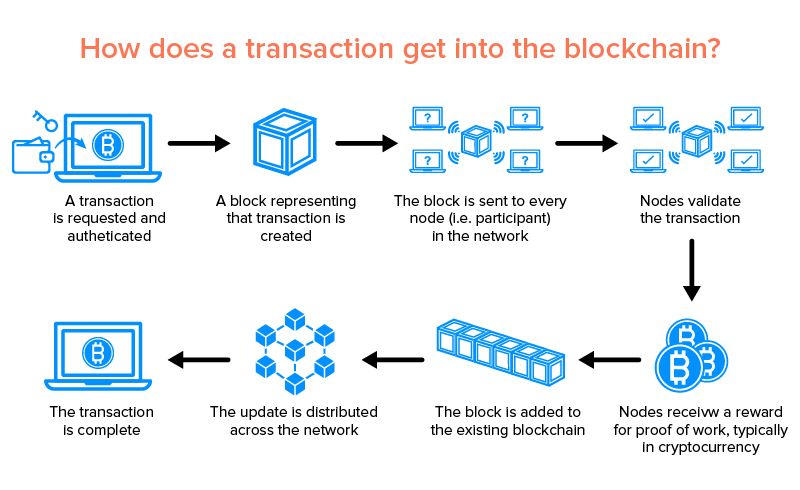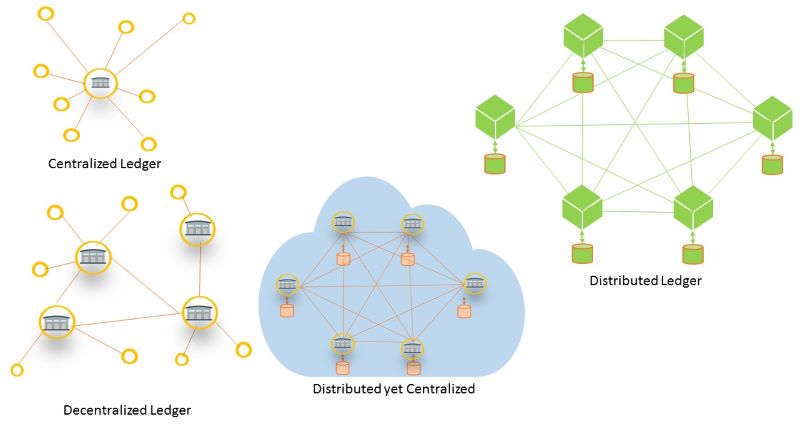Hashgraph consensus in blockchain might just be the turbo-charge we’ve been waiting for. Forget the slow lanes of yesterday’s tech; Hashgraph is racing to the forefront, and I’m here to tell you why. It’s not just another contender; it could be the champ that redefines the game. Fasten your seatbelt—let’s dive into what makes Hashgraph a standout and whether it’s bound to outpace traditional blockchain. Want to stay ahead in this tech revolution? Stick around. The future is closer than you think.
Exploring the Hashgraph Revolution
Defining Hashgraph Technology
Hashgraph is like a new family member in the world of tech. Picture a web. A web where each strand connects with speed and trust in a special way. This web is what we call a hashgraph. Simply, it’s a way for computers to agree. They agree on who said what and when. It does this super fast.
Now, you might wonder, how does it really work? Well, imagine all the computers telling each other secrets. That’s what we call the Gossip about Gossip protocol. They chat, share what they know, and build trust with each other. In a quick way, they get on the same page without a boss.
Next, comes the Virtual Voting mechanism. It’s like each computer remembers the gossip and makes a secret vote. They sort out the truth from the lies without shouting it out loud. All silently and quickly.
With these two tools, hashgraph makes its own rulebook. That’s why many think it could be the future of how we use the internet.
Hedera Hashgraph as a Blockchain Alternative
Imagine standing at a crossroad — one way is blockchain, which we know well. The other way is Hedera Hashgraph, a new path to explore. It’s like picking between an old, bumpy road and a smooth highway.
On this new path, Hedera is the city. It’s a world where HBAR, its own kind of money, makes trade quick and fair. Everyone knows their place in line, and no one cuts ahead.
The big deal here? It’s fast, really fast. Transactions zip by like race cars. Yet, it’s safe as a snug seatbelt, thanks to how it’s built. It’s like having a sturdy fence, keeping out folks who try to mess up the order.
If we peek under the hood, we notice Hedera uses a DAG. That’s tech talk for Directed Acyclic Graph. Think of it as the engine that makes Hashgraph zoom. It’s not just fast; it packs a lot too. Think of an elevator that can hold a ton yet move like a feather.
And don’t forget about the peace of mind it offers. From little chats to big deals, it’s all about trust. Computers agree, no shady business happens.
So, is Hedera Hashgraph better than blockchain? It’s like asking if the new game in town beats the old favorite. Both have their fans. Each shines in different plays.
Hedera offers a new way. A way where everyone shakes hands, agrees, and builds. Every chat, every deal, every swap and share — it’s all fair and square. That’s the dream Hedera is after.
In a world buzzing with tech chat, Hedera is a hot topic. Will it win the race? Time will tell. But for sure, it’s got some shiny wheels that make many turn their heads.
The Mechanics of Hashgraph Consensus
Gossip about Gossip Protocol
Let’s dive into how the Hedera network talks. Imagine a game of telephone. In the Hedera Hashgraph, this game is key. It’s called the Gossip about Gossip protocol. Here’s how it works. Each node shares what it knows. It gossips the latest info. This includes new transactions and the gossip it heard. This keeps spreading until all know all.
Why gossip? It’s simple and fast. As nodes chat, they share the history of messages. This builds a graph of who talked to whom and what was said. It’s this graph that makes sure everyone agrees on the order of events. Hedera Network uses this to reach consensus fast without a hitch.
Now, this all may seem like fun and games, but trust me, it’s cryptographic trust at play here. What’s that, you ask? It’s where math meets security. We use hard math problems to keep our secrets safe. That’s what keeps the Hedera network secure. And what’s really cool about this? Gossip protocol can handle many messages at once. This gives hashgraph distributed ledger its fast transaction speed and low-latency consensus.
Virtual Voting Mechanism
But wait, there’s more to it. We can’t just gossip and hope all’s well. We need a way to vote, to agree on what’s true — like finding the best pizza place in town. Here’s where Virtual Voting comes into the picture. But unlike raising hands, it’s way cleverer. Each node figures out what the others would vote. They do this based on the gossip history. It’s like psychic voting!
This is what lets hashgraph technology be so quick. Nodes don’t need to send votes across the world. They just use the info from the gossip to guess it all. It’s also safer from bad actors. Think of it as having a secret club handshake that’s always changing. Almost impossible to fake! Byzantine fault tolerance? You bet! This means even if some nodes are traitors, the network still works fine.
In the battle of hashgraph vs blockchain, think of Hedera’s Virtual Voting as a ninja move. It’s quiet, it’s smart, and it gets the job done without any fuss. Energy-efficient consensus? That’s another win for hashgraph technology. Since we don’t need power-hungry mining like some blockchain alternatives, we save a ton of energy.
So, let’s sum it up: Hedera Hashgraph uses gossip to spread data lightning-fast. Virtual Voting then lets nodes predict votes to seal the deal. Together, they make a DAG-based consensus that’s quick, sturdy, and green. As we bring enterprise blockchain solutions into reality, it’s this kind of smarts that counts. If ledgers are the brains of crypto, then Hedera’s hashgraph data structure is like having Einstein in your corner.
Advantages of Hashgraph Over Traditional Blockchains
Speed and Fairness in Transaction Ordering
Imagine going from LA to New York in four hours instead of six. That’s how hashgraph zips past blockchain when it comes to speed. Hashgraph technology can process many transactions in seconds. The Hedera network uses this to keep things moving super fast. Traditional blockchains often hit a snag, as they add one block at a time. Hashgraph doesn’t line up blocks. Instead, it weaves them in, using a method like a family tree, but we call it a “DAG” – think of a web of branches.
Each node chats, sharing the latest gossip. This “Gossip about Gossip” protocol makes the Hedera network super informed, at all times. It’s like having a chat with the whole school to figure out a class president – fast and fair. Because every voice is heard, no one can cheat. We get a fair list of transactions with no one cutting in line.
In blockchain, miners might play favorites, but not in hashgraph. Here, fair means everyone’s vote counts the same. Your transaction gets its fair turn in line. This approach is a win for games needing a fair shot, or for buying concert tickets where every second counts.
Achieving Byzantine Fault Tolerance
Now, let’s chat about trust. Trust is as vital online as it is in the real world. Byzantine Fault Tolerance (BFT) is a fancy term for building trust in a network. In simple words, it helps us agree even when some friends try to trip us up. Imagine playing tag with your eyes closed, trusting friends to say if you’re “It” or not. BFT is like opening your eyes so no one can fool you.
Hashgraph dishes out this trust like candy. Because of its snazzy gossip and voting, hashgraph makes sure everyone agrees on what’s what. Even if some computers turn into bad apples and tell lies, the rest keep things straight. Remember, hashgraph doesn’t just ask one friend – it asks all of them, so it’s super hard to trick.
While blockchain also aims for this kind of trust, hashgraph’s gossip method does it with less chit-chat overall. That means less waiting and guessing. In blockchain, more chit-chat can slow us down and if some friends are sneaky, they could mix up the game. Hashgraph’s style is like having a super awesome teacher who always knows who’s telling the truth. It keeps our game of tag running smooth without anyone cheating.
And why does this matter so much? Well, when we buy stuff or send money, we want to know it’s safe. We want our games to play fair and our votes to count. A network like Hedera’s makes that happen, and that’s a big deal for us all.
So, next time you hear about hashgraph, think fast and fair games of tag where your money and data gets the VIP treatment, zipping through the web like a champ. It’s the behind-the-scenes hero making sure we all play by the rules, every time. And honestly, in the world of tech, that’s pretty much like having superpowers!
The Future of Distributed Ledger Technologies
Use Cases for Hashgraph in Enterprise Solutions
Imagine a world where business deals are secure, quick, and fair. This is where hashgraph technology shines. Companies big and small can benefit from it. Think of supply chains tracking goods without missing a beat. Hospitals share medical records in seconds while keeping privacy tight. Everyone knows who sent what, and when, on a network that doesn’t play favorites.
Now, why pick hashgraph over other options? It’s mainly its speed and trust. Picture a web where every user’s voice carries the same weight. They share data like spreading rumors – fast and wide. We call this Gossip about Gossip. This method is key in reaching agreement across the board without a leader.
So, there’s a vote, but not as you know it. It’s virtual. No actual ballots are cast. But still, every voice is heard clear and fair. This Virtual Voting decides what’s true in the network. It happens behind the scenes, keeping things smooth and steady.
Do you wonder how secure and trustworthy it is? Hashgraph keeps the bad guys out. It’s like having a lock that gets stronger with each new person who joins. This is the magic of byzantine fault tolerance – a fancy term meaning even if some are lying, we’re still in good hands.
But it’s not all just smoke and mirrors. Real businesses use hashgraph today. From gaming companies creating new worlds to stock markets making trades in the blink of an eye. Think of it like supercharging the net, all while keeping the power bills low. That’s the beauty of an energy-efficient system.
The Role of HBAR in Hedera’s Ecosystem
Cash rules in our regular lives, right? Well, every digital community has its form of money too. In Hedera’s world, that’s HBAR. Now, this isn’t your average cryptocurrency. It fuels the network and keeps it safe. When you use Hedera’s network, HBAR is the gas that keeps the engine running.
HBAR is not just money; it’s also a guard. It protects the Hedera network from troublemakers. Think of paying for a watchdog that gets smarter and tougher the more you invest. Users stake HBAR to validate transactions, thus contributing to the safety of everyone’s dealings. The more you hold, the more your say counts. It’s the backbone of Hedera’s decision-making.
Let’s talk game-changers. Enterprises are seeing gold in HBAR’s use. It’s not just about wealth though. It’s about building systems that stand tall and wide, with no single point of failure. No one owns it all, and everyone stays in the loop. It’s striking that perfect balance between public oversight and keeping secrets secret.
HBAR is important for another big reason. It makes dealing with tiny payments doable. Imagine paying fractions of a penny for reading an article or playing a game online. These microtransactions handling is a huge leap, especially where small change matters mightily.
So there you have it, a peek into tomorrow today. Hashgraph brings a trusty and zippy way of making deals in cyberspace. Hedera’s HBAR sits at the heart of this, as both money and muscle. It’s keeping the family safe while opening doors for business near and far. The road ahead looks bright, doesn’t it?
The hashgraph is leading the pack among the new kids on the block(chain). It’s about fast talks and firm handshakes. And trust me, we’re only seeing the start of where this tech will take us.
In this post, we explored the Hashgraph revolution in detail. We kicked off by defining what Hashgraph technology is and looked into Hedera Hashgraph as an alternative to blockchain. Then, we dove into the core mechanics of Hashgraph, discussing the unique “gossip about gossip” protocol and virtual voting system that makes it work. We also compared Hashgraph’s strengths to traditional blockchains, noting its speed and fairness when it comes to transaction order, as well as its ability to tolerate faults.
Looking ahead, the potential for Hashgraph is big, especially for businesses. With use cases in enterprise solutions and the critical role of HBAR in Hedera’s network, it’s clear this tech could shape our future. My final thought? Keep an eye on Hashgraph. It may just be the next big leap in how we manage and record our digital lives.
Q&A :
What is hashgraph consensus in blockchain, and how does it work?
Hashgraph consensus is an alternative distributed ledger technology to blockchain, offering a way of achieving consensus among participants in a network. Unlike blockchain that uses a chain of blocks to store transactions, Hashgraph uses a directed acyclic graph (DAG) to record information, which allows it to process transactions in parallel. This can result in faster transaction speeds and lower costs. Consensus is reached through a process called ‘gossip about gossip,’ where nodes communicate randomly with each other, spreading information rapidly through the network.
How does hashgraph consensus differ from traditional blockchain consensus mechanisms?
Traditional blockchain consensus mechanisms, like Proof of Work or Proof of Stake, rely on miners or validators to agree on the state of the blockchain and to add new transactions. Despite being secure, they can be slow and energy-intensive. In contrast, hashgraph consensus does not require proof of any work or stake. It uses a ‘gossip protocol’ combined with a virtual voting mechanism to achieve consensus quickly and efficiently. This can potentially handle higher throughput of transactions with less computational power required.
What are the benefits of using hashgraph consensus over blockchain?
Hashgraph consensus offers a few notable advantages over traditional blockchain. It can provide faster transaction speeds due to its asynchronous consensus mechanism, which allows for multiple transactions to be processed at the same time. Also, it may offer better fairness because the order of transactions is less likely to be manipulated. Additionally, hashgraph operates with increased security assurances in Byzantine environments, where nodes in the network may not be trusted.
Is hashgraph consensus more secure than blockchain consensus methods?
Hashgraph consensus claims to provide a high level of security, potentially equalling or surpassing that of traditional blockchain. Due to its consensus mechanism which incorporates Byzantine Fault Tolerance (BFT), it is resistant to distributed denial-of-service (DDoS) attacks, and as there are no blocks or miners, the risks associated with forking are eliminated. Nonetheless, security can be context-dependent, and differing blockchain designs each have their own strengths.
Can hashgraph consensus scale better than blockchain for enterprise solutions?
Hashgraph consensus has been recognized for its potential to scale efficiently due to its fast consensus algorithm and parallel transaction processing capability. This makes it a promising candidate for enterprise solutions that require the processing of a high volume of transactions. As enterprises typically need to handle a lot of data and require quick transaction times, hashgraph’s architecture could offer an advantage over traditional blockchains, which may become slower and more costly as they scale.




